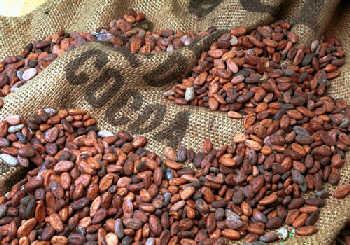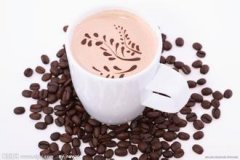Five major brewing factors of espresso Espresso

The scientific definition of Italian concentration is as follows: coffee bean powder content-6.5g, boiling water temperature-90 ±5 ℃, cooking water pressure-9 ±2bar, cooking time-30 ±5 seconds. When we brew espresso, we must take the scientific definition as the basis, but because there are so many factors to pay attention to when brewing a cup of espresso, there are about 20 different influencing factors. We won't discuss it here.
Brewing pressure: the higher the brewing pressure, the higher the proportion of coffee chemicals extracted, but what percentage should be extracted is correct? There is no absolute standard brewing pressure value based on the condition and daily changes of the coffee beans used, but we can use the scientific definition of espresso as a basis to adjust to the correct brewing pressure setting.
The value of the boiler pressure, assuming that under the same atmospheric pressure value, because the volume of each boiler is different from the set level of the water level, the resulting effluent temperature of the cooking head will also be different, so the correct effluent temperature of the cooking head must be determined. When the boiler pressure is lower and the temperature is lower, the sour taste of the extracted coffee will be more obvious, and the overall flavor of the extracted coffee will be weaker; when the boiler pressure is higher and the temperature is higher, the extracted coffee coke will be more withered and the overall flavor will be heavier, so, we can use this principle as a basis for adjusting the flavor of extracted coffee.
The fineness of coffee powder: basically, the three controlling factors, namely, the amount of coffee powder, the power of filling coffee powder, and the thickness of coffee powder, are used together to fill out different coffee pressed powder densities so as to adjust and control the extraction degree of coffee. in terms of the fineness of coffee powder, the thicker most coffee powder particles are, the shallower the extraction degree is, and the more acidic chemicals will be. There are fewer bitter chemicals. On the contrary, the finer the particles of coffee powder, the deeper the extraction, the more bitter, and the less sour. However, some coffee beans will be different from the above principles because of the characteristics of their own beans, we should pay attention!
Amount of coffee powder: the more the amount of coffee powder, the higher the relative coffee concentration and mellowness, while assuming that under the same coffee pressed powder volume, when there is too much coffee powder, the density of coffee pressed powder will be too dense, resulting in insufficient extraction of coffee powder. When the amount of coffee powder is too small, the density of coffee pressed powder will be too loose, resulting in excessive extraction of coffee powder, so the appropriate amount of coffee powder can correctly extract the chemicals in coffee pressed powder.
The strength of filling coffee powder: the force of filling coffee powder will be determined according to the thickness of coffee powder and the amount of coffee powder, assuming that under the same coffee powder thickness and powder quantity, if the filling pressure channel is too large, the density of coffee pressed powder will be too dense, and the extraction time of water will be prolonged, resulting in excessive extraction. When the filling pressure channel is too small, the density of coffee pressed powder will be too loose. Resulting in insufficient extraction.
The state of the coffee extract: when brewing the coffee, you must observe the state of the coffee extract to check whether the correct coffee extract is extracted in accordance with your own set way. Because the state of the extract will vary according to the way the coffee beans are mixed, the degree of roasting, the adjustment of the Italian coffee machine, and the barista's brewing skills, it is not generally said that only the reddish-brown cream coffee extract is correct. Take the light and medium roasted coffee beans with northern Italian flavor, for example, the cream on the surface is not reddish brown, so when the tissue of cream is uniform, the alcohol is thick enough, and there is no excessive or insufficient extraction color, it is the ideal state of coffee extract.
Important Notice :
前街咖啡 FrontStreet Coffee has moved to new addredd:
FrontStreet Coffee Address: 315,Donghua East Road,GuangZhou
Tel:020 38364473
- Prev

Adjustment and setting of the key machines and equipment for the success of Coffee Lacquer
Adjustment and setting of coffee machine and equipment 1. Italian professional coffee machine A. Boiler pressure boiler pressure gauge: the actual unit of the boiler pressure gauge is bar, that is, the unit of atmospheric pressure, which is generally adjusted in 10.2bar. Some boiler pressure gauges and inlet pressure gauges are displayed in the same pressure gauge, which are configured for the upper and lower parts and the left and right sides respectively. The easiest way to identify them is
- Next

The principle and way of milk foaming Why do you use foaming milk?
The principle and method of milk foaming a. Why use foamed milk? The basic principle of milk foaming is to use steam to hit the milk, so that the liquid milk into the air, using the surface tension of milk protein around to form a lot of small foam, so that the liquid milk volume expansion, into a foam-like milk bubble. In the process of foaming, lactose dissolves because of the increase in temperature
Related
- Beginners will see the "Coffee pull flower" guide!
- What is the difference between ice blog purified milk and ordinary milk coffee?
- Why is the Philippines the largest producer of crops in Liberia?
- For coffee extraction, should the fine powder be retained?
- How does extracted espresso fill pressed powder? How much strength does it take to press the powder?
- How to make jasmine cold extract coffee? Is the jasmine + latte good?
- Will this little toy really make the coffee taste better? How does Lily Drip affect coffee extraction?
- Will the action of slapping the filter cup also affect coffee extraction?
- What's the difference between powder-to-water ratio and powder-to-liquid ratio?
- What is the Ethiopian local species? What does it have to do with Heirloom native species?

